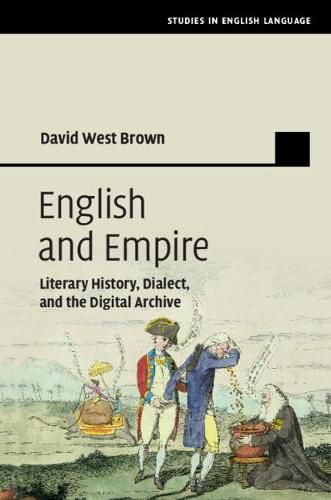Readings Newsletter
Become a Readings Member to make your shopping experience even easier.
Sign in or sign up for free!
You’re not far away from qualifying for FREE standard shipping within Australia
You’ve qualified for FREE standard shipping within Australia
The cart is loading…






Combining statistical modelling and archival study, English and Empire investigates how African diasporic, Chinese, and Indian characters have been voiced in British fiction and drama produced between 1768 and 1929. The analysis connects patterns of linguistic representation to changes in the imperial political economy, to evolving language ideologies that circulate in the Anglophone world, and to shifts in sociocultural anxieties that crosscut race and empire. In carrying out his investigation, David West Brown makes the case for a methodological approach that links the distant (quantitative) and close (qualitative) reading of diverse digital artefacts. Taking an interdisciplinary approach, the book will appeal to a variety of scholars and students including sociolinguists interested in historical language variation, as well as literary scholars interested in postcolonial studies and the digital humanities.
$9.00 standard shipping within Australia
FREE standard shipping within Australia for orders over $100.00
Express & International shipping calculated at checkout
Combining statistical modelling and archival study, English and Empire investigates how African diasporic, Chinese, and Indian characters have been voiced in British fiction and drama produced between 1768 and 1929. The analysis connects patterns of linguistic representation to changes in the imperial political economy, to evolving language ideologies that circulate in the Anglophone world, and to shifts in sociocultural anxieties that crosscut race and empire. In carrying out his investigation, David West Brown makes the case for a methodological approach that links the distant (quantitative) and close (qualitative) reading of diverse digital artefacts. Taking an interdisciplinary approach, the book will appeal to a variety of scholars and students including sociolinguists interested in historical language variation, as well as literary scholars interested in postcolonial studies and the digital humanities.